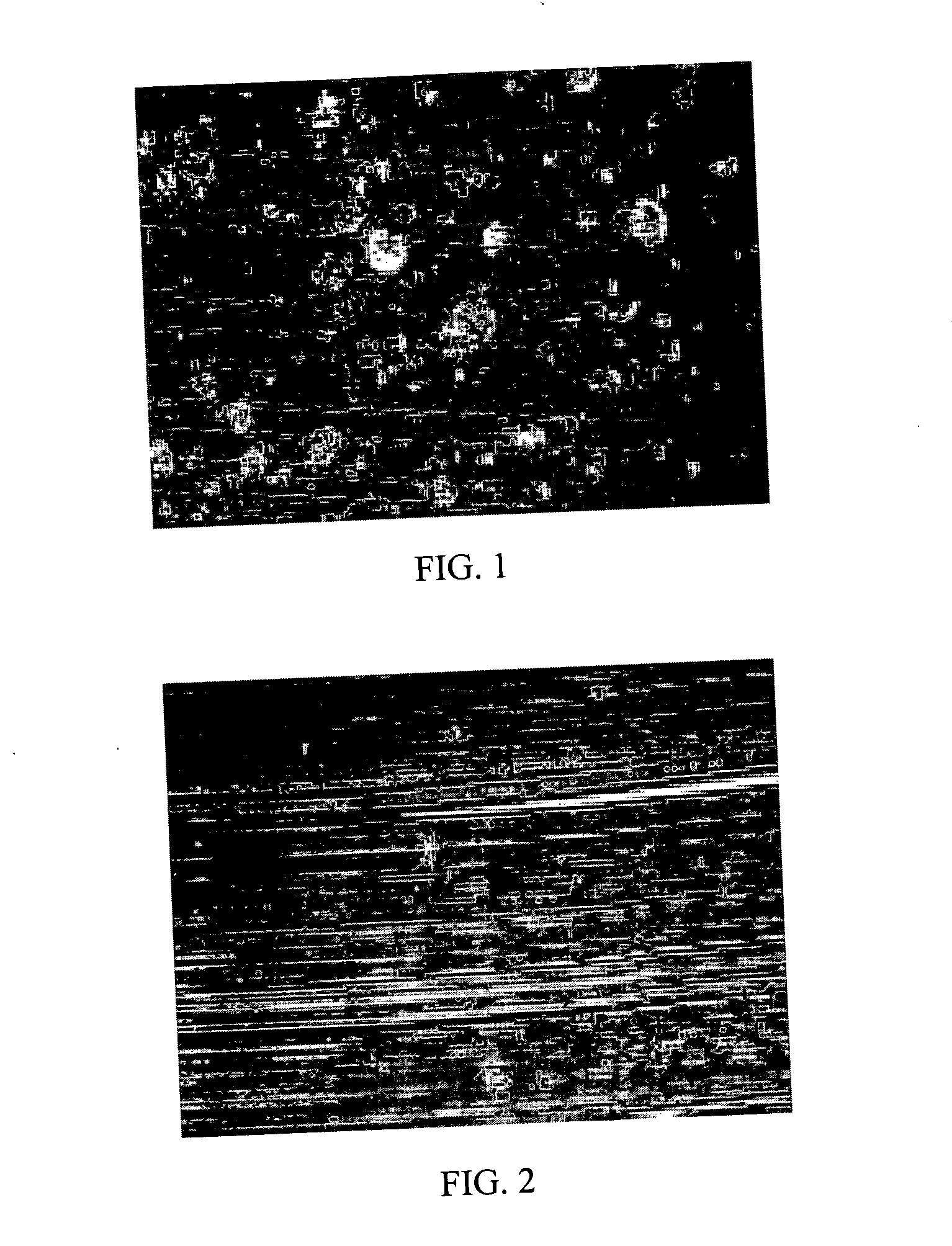Processes for dispersing an impact modifier in a macrocyclic polyester oligomer
- Summary
- Abstract
- Description
- Claims
- Application Information
AI Technical Summary
Benefits of technology
Problems solved by technology
Method used
Image
Examples
experimental examples
V. EXPERIMENTAL EXAMPLES
[0088] Examples of the addition of an impact modifier into a macrocyclic polyester oligomer (cyclic polybutylene terephthalate, cPBT) were performed with Paraloid® EXL-2691 as an impact modifier, manufactured by Rohm and Haas Company of Philadelphia, Pa., and with cPBT manufactured by Cyclics Corporation of Schenectady, N.Y. Paraloid® EXL-2691 is a MBS core-shell copolymer that consists of a butadiene-containing polymer as the soft-core material surrounded by a harder methacrylate-styrene outer shell. Further details of the experimental procedures are included in the next section of this document.
example 1
[0089] As a comparative example, a first composition containing about 10 wt. % Paraloid® EXL-2691 was prepared using a resin kettle fitted with a mechanical stirrer. After melting the cPBT at 170° C., the Paraloid® EXL-2691 was added and the mixture stirred for 30 minutes. Butyldihydroxytin chloride catalyst (sold as Fascat® 4101, manufactured by Arkema, Inc. of Philadelphia, Pa.) was stirred in for 90 seconds followed by immediate cooling to produce a non-polymerized composition containing about 10% impact modifier and about 0.2 mol % Sn catalyst based on cPBT monomer repeat units.
[0090] The following provides more detail regarding how the first composition was prepared. A 4 L resin kettle was fitted with a glass stir rod, teflon blade, ground glass sleeve and an inlet connected to nitrogen gas and vacuum. About 3143 g of cPBT was placed in the kettle and heated at about 170-190° C. under vacuum until completely molten, then cooled to about 170° C. under a N2 blanket. Paraloid® EX...
example 2
[0091] A second composition containing about 10 wt. % Paraloid® EXL-2691 was prepared by blending cPBT and the impact modifier in a Randcastle single-screw extruder operated at barrel temperatures of about 125-135° C. and quenching in cold water. After drying and grinding to a powder, the extrudate was powder blended with a catalyst / cPBT master batch (19 parts extrudate+1 part catalyst / cPBT master batch). The catalyst / cPBT master batch contained 6.6 wt. % butyldihydroxytin chloride and 93.4 wt. % cPBT and was prepared by blending 0.66 pound of butyldihydroxytin chloride catalyst with 9.37 pounds cPBT in a twin-screw extruder as described in Examples 5 and 6, then grinding to a fine powder (passes through a U.S. 30-mesh sieve). The result of the powder blending of the cPBT / Paraloid® extrudate with the aforementioned catalyst / cPBT master batch was a non-polymerized cPBT composition containing about 10 wt. % impact modifier and about 0.3 mol % Sn catalyst based on cPBT monomer repeat u...
PUM
| Property | Measurement | Unit |
|---|---|---|
| Temperature | aaaaa | aaaaa |
| Temperature | aaaaa | aaaaa |
| Percent by mass | aaaaa | aaaaa |
Abstract
Description
Claims
Application Information
 Login to View More
Login to View More - R&D
- Intellectual Property
- Life Sciences
- Materials
- Tech Scout
- Unparalleled Data Quality
- Higher Quality Content
- 60% Fewer Hallucinations
Browse by: Latest US Patents, China's latest patents, Technical Efficacy Thesaurus, Application Domain, Technology Topic, Popular Technical Reports.
© 2025 PatSnap. All rights reserved.Legal|Privacy policy|Modern Slavery Act Transparency Statement|Sitemap|About US| Contact US: help@patsnap.com



